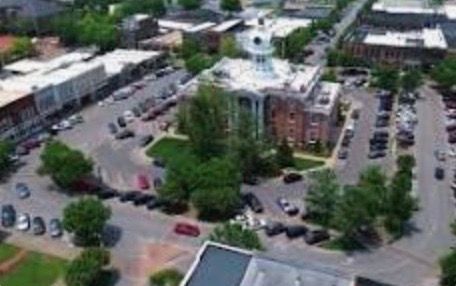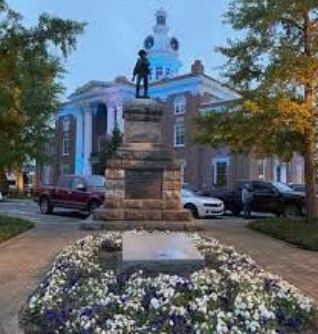History of Murfreesboro, TN
Brief History of Murfreesboro, TN Including Stones River Battlefield

History of Murfreesboro
Murfreesboro and Rutherford County have experienced remarkable growth, transforming from a quiet, rural area into a vibrant community full of opportunity and innovation. With a thriving economy rooted in manufacturing, healthcare, education, and retail, and an affordable cost of living, this is an exciting time to make Murfreesboro your new home. As a local realtor, I’m dedicated to helping you find the perfect property here, whether you’re looking for a family home, a convenient investment, or just the chance to be part of this dynamic region. Reach out today, let’s explore how Murfreesboro can become your new hometown and start your next chapter together.
In 1811, amid the growth and development of Tennessee’s expanding frontier, the Tennessee State Legislature recognized the need for a designated county seat for Rutherford County. A special committee was appointed to select the most suitable location that would serve as the administrative and judicial hub for the region. After careful consideration, the site that was chosen was 60 acres of land owned by Captain William Lytle, a prominent local landowner and early settler. This land was strategically located in the center of the county, making it accessible for residents across the area.
Soon after the land was selected as the Rutherford County seat in 1811, the Tennessee General Assembly officially named the growing settlement Cannonsburgh in honor of Newton Cannon, a young and influential politician. Cannon was a rising star in Tennessee politics at the time, and the name reflected the new town’s aspirations to grow as a regional center.
However, just one month later, Captain William Lytle, who owned the land and was a prominent local figure, requested to change the name to Murfreesboro in honor of his friend, Colonel Hardy Murfree. Colonel Murfree was a well-respected leader and one of Tennessee’s early pioneers, and Lytle wished to memorialize his friend’s contributions to the region. With the approval of the legislature, the name was officially changed. By 1817, Murfreesboro was recognized as an official city.
In its early years, Murfreesboro was primarily an agricultural community, with crops like corn, cotton, and tobacco forming the backbone of the local economy. Its fertile land and strategic location fueled farming and trade, helping the town grow steadily. In 1818, Murfreesboro temporarily served as Tennessee’s capital during a period when Nashville was undergoing major renovations and improvements to its statehouse. During this brief but significant period, from 1818 to 1826, Murfreesboro played a key role in the state's government. It hosted legislative sessions, meetings of government officials, and served as the heart of Tennessee’s political activity during those years, cementing its importance in the state's early development.
Although Murfreesboro’s time as the state capital lasted only eight years, this era marked a pivotal chapter in its history, highlighting the city’s early influence on Tennessee’s growth. By 1853, Murfreesboro had become known as the “Athens of Tennessee,” due to its many educational institutions, including three colleges and several academies. A visiting religious reporter at the time praised the city’s educational excellence and vibrant scholarly community. However, the Civil War and subsequent military occupation caused setbacks for local education, and the city’s institutions struggled during this difficult period.
In October 1863, Confederate cavalry threatened Murfreesboro and the nearby Fortress Rosecrans, but their attack was thwarted by the fortress's strong defensive lines. Instead of challenging the fort’s defenses, the horsemen retreated south of town, burning a bridge and tearing up railroad tracks in their path, aimed at disrupting Union supply lines as they moved toward Shelbyville. The most pivotal event in Murfreesboro’s Civil War history was the Battle of Stones River, fought from December 31, 1862, to January 2, 1863. It ended in a Union victory after Confederate General Braxton Bragg’s forces withdrew following heavy losses. Despite the high casualties on both sides, the victory marked a major strategic gain for the Union, consolidating control of Middle Tennessee and boosting morale after recent setbacks like the defeat at Fredericksburg. Several factors contributed to this Union win: Bragg’s miscalculations, including staggered attacks that allowed Union artillery to have maximum effectiveness; Union General William Rosecrans’s steadfast defense despite severe losses; and Bragg’s failure to break Union lines, which forced him to retreat. The battle’s outcome had far-reaching consequences, securing Nashville and reinforcing Lincoln’s Emancipation Proclamation. It also became one of the bloodiest battles of the war and a turning point that set the stage for future Union campaigns in Tennessee and the deeper South. For Murfreesboro residents, the battle was more than just a military event, it permanently altered the town’s role in the war. After the victory, Union forces occupied the city, transforming Murfreesboro into a key military hub and supply depot for the Union army for the duration of the war. The battle’s high human cost and strategic importance remain a defining moment in Murfreesboro’s history.
The Civil War brought profound upheaval to Murfreesboro, a city that once prided itself on its educational achievements. The war’s destruction, occupation, and economic disruption dealt a severe blow to the city’s educational institutions. Schools were closed, buildings were damaged or repurposed for military use, and many educators and students experienced significant hardships. The trauma of war, along with the loss of many young men and the displacement of families, caused a sharp decline in educational activity, leaving the community with a sense of loss and stagnation. After the war’s end, Murfreesboro faced the challenge of rebuilding from the ashes. The community recognized the importance of education for its future and gradually began to recover. Over the following decades, efforts were made to repair and reopen schools, while new institutions were established to serve the growing population. By the early 1900s, the city was once again fostering an environment of learning, with new colleges, vocational schools, and secondary schools emerging to meet the needs of its expanding population. This revival of education not only helped restore Murfreesboro’s status as the “Athens of Tennessee” but also contributed to its broader economic development and social progress.
By 1911, Murfreesboro had established Middle Tennessee State Normal School (now Middle Tennessee State University-MTSU), initially created to train teachers and improve public education across the state. This marked Murfreesboro’s emergence as a regional center for teacher training, providing a vital foundation for educational development in the region. The school grew steadily, attracting students from nearby counties and beyond, and played an important role in enhancing the area’s educational standards. In addition to the Normal School, the city was home to Tennessee College for Women, which had opened in 1907. It served as a key institution for women’s education, offering college-level coursework and promoting higher education opportunities for women during a time when women’s roles were evolving in society. Throughout the early decades of the 20th century, Murfreesboro’s schools faced the challenges common to the era, including limited budgets, segregated facilities, and the need for modernization, but community leaders prioritized the expansion of educational access. Local schools and academies continued to serve students, and the region gradually prepared for the broader educational advances to come in the post-World War II era. Despite the hardships caused by the Great Depression in the 1930s, educational institutions remained committed to growth and innovation, setting the stage for the city’s later development into a major educational hub in Tennessee.
The end of World War II marked a significant turning point for many communities across the United States, and Murfreesboro and Rutherford County were no exception. Prior to the war, the local economy was heavily reliant on agriculture. Farming was the primary occupation for a large portion of the population, and crops like cotton, tobacco, and hay were the main drivers of economic activity. However, the post-war era brought about a wave of change, fueled by several factors:
- National Industrial Expansion: The war effort had spurred significant industrial growth across the nation. As factories retooled for peacetime production, there was a growing demand for goods and services, leading to the expansion of manufacturing and other industries.
- Government Investment: The federal government made strategic investments in infrastructure and economic development, particularly in the South. This included funding for highways, utilities, and industrial parks, which attracted businesses and created new job opportunities.
- Shifting Demographics: The war also led to a shift in demographics. Many rural residents migrated to urban areas in search of employment, and returning veterans sought new opportunities beyond traditional farming.
- Technological Advancements: Advancements in agricultural technology reduced the need for manual labor, leading to a decline in the agricultural workforce. At the same time, new technologies and manufacturing processes created a demand for skilled workers in industrial settings.
Economic and Social Impacts
The transition from an agricultural to an industrial economy had profound social and economic impacts on Murfreesboro and Rutherford County:
- Job Creation: The growth of industry and manufacturing created thousands of new jobs, providing employment opportunities for local residents and attracting newcomers to the area.
- Increased Income: Wages in industrial and manufacturing jobs were generally higher than those in agriculture, leading to increased income levels and improved living standards for many families.
- Population Growth: As the economy diversified and job opportunities expanded, Murfreesboro and Rutherford County experienced steady population growth.
- Changing Community Character: The shift from a rural, agricultural society to a more urban, industrial community brought about changes in the region's character and culture. New businesses, restaurants, and entertainment venues emerged, catering to a more diverse and affluent population.
The 1970s and 1980s marked a transformative period in Rutherford County’s history, shifting its identity from primarily an agricultural economy to one increasingly driven by industry and manufacturing. In 1970, Purity Dairy opened, representing growth in local business and commerce. The Firestone/Bridgestone plant began operations in 1971, bringing significant industrial investment and jobs to the region. In 1983, the Nissan plant opened its doors, further solidifying Rutherford County’s role in the automotive and manufacturing sectors. Retail development also accelerated with the opening of the first Walmart in 1987, reflecting a modernization of the local economy. Additionally, the founding of what is now Murfreesboro Medical Clinic (MMC) in 1995 signaled advances in healthcare infrastructure. Collectively, these developments helped Rutherford County transition from an economy based on agriculture to one rooted in industry and industry-related services, paving the way for sustained growth and diversification in the years that followed. The post-war economic transformation laid the foundation for Murfreesboro and Rutherford County's continued growth and development in the decades that followed. The region's strong industrial base, combined with its strategic location, excellent schools, and high quality of life, have made it an attractive destination for businesses and residents alike. As a result, Murfreesboro has become one of the fastest-growing cities in Tennessee, with a thriving economy and a diverse community.
Murfreesboro has experienced remarkable growth since the 1990s, driven by a combination of strategic investments in industry, education, and infrastructure. The city’s proximity to Nashville, an area that has seen tremendous expansion over the past thirty years, has also played a major role in Murfreesboro's growth. Nashville’s rising population, thriving businesses, and vibrant cultural scene have created spillover growth in Rutherford County, making Murfreesboro an increasingly attractive place to live and work.
Economic development efforts attracted retail giants like Walmart and Costco. The Avenue opened in 2008 which brought very exciting retail and restaurant options to Murfreesboro. Medical Center Parkway is still being developed with new living, eating and retail options today, 17 years later! Healthcare providers such as Murfreesboro Medical Clinic and St. Thomas Rutherford Hospital expanded significantly during this time, creating thousands of jobs and vastly improving local healthcare services. Educational advancements further fueled this growth; Middle Tennessee State University (MTSU) continued expanding its programs and campus facilities, becoming a vital hub for higher education and workforce development. The opening of Motlow State Community College’s Smyrna campus in 1994 has provided residents across Rutherford County with additional access to higher education and workforce training. This expansion of educational opportunities has been instrumental in helping local industries find skilled workers and supporting the ongoing economic development of the region. All these investments, and our proximity to Nashville, have contributed to a population boom, making Murfreesboro one of the fastest-growing cities in Tennessee. Murfreesboro is often considered the geographic center of Tennessee, which adds to its unique appeal. Sitting roughly equidistant from the eastern and western borders of the state, Murfreesboro's central location makes it a convenient hub for travel and transportation within Tennessee. This geographic advantage has historically supported the city’s growth, making it accessible from major cities like Nashville, Chattanooga, Memphis, and Knoxville. Being at the heart of Tennessee also contributes to Murfreesboro’s identity as a thriving, connected community. We're a place where the state’s diverse regions can come together, bringing a mix of cultural influences, business opportunities, and a strong sense of local pride. The city offers a wide range of job opportunities and a high quality of life, which continue to draw new residents and businesses from across the region. When it comes to housing, the city’s growth has naturally impacted the market. While housing costs have increased, they remain competitive compared to larger metropolitan areas, making Murfreesboro an appealing place to buy a home.
Overall, Murfreesboro’s evolution is a story of community, opportunity, and progress. It’s a wonderful time to consider making this thriving city your new home. If you're curious about available properties or want to learn more about what makes Murfreesboro such a special place to live, I’d be delighted to assist.
*
Some of the information for this blog is from the Murfreesboro city site.
Murfreesboro Real Estate
Buying and Selling in Murfreesboro
Rutherford County Real Estate
Murfreesboro Realtor
Real Estate Communication
Murfreesboro Real Estate Questions











